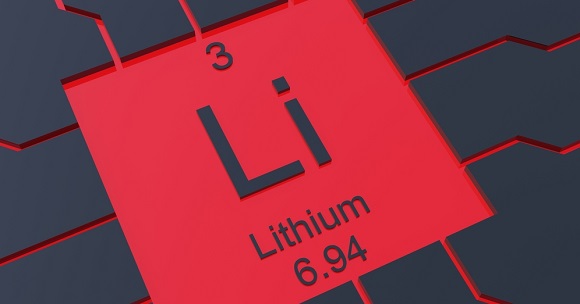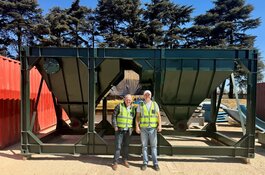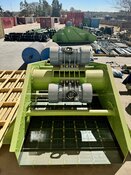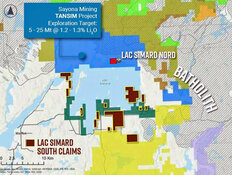The Energy Report: Jonathan, what is the condition of the lithium space today?
Jonathan Lee: The lithium space today is an oligopoly; there are only four major mines owned by four companies. Over the past three years, the space has actually consolidated with the largest mine, Greenbushes, owned by two companies through a joint venture agreement. From that perspective, price increases have occurred over the past three years, just because of the concentration of the mine operators.
TER: What are the greatest challenges for the space?
JL: The hardest challenge is that lithium is not really a mining sector investment; it's a specialty chemicals investment. A lot of the products that lithium miners or producers sell are specialty chemicals, and there is somewhat of a competitive moat around these products because many are specialized to the customer. Lithium is not a commoditized product. The incumbents have both the premier assets globally in terms of low-cost operation, and also a knowledge base of who the customers are, what they're looking for and what specifications they require. Those are some of the challenges faced by any new entrant to the space. From the investor perspective, there are limited opportunities for pure play lithium exposure since three of the four existing producers are part of larger conglomerates with other business lines, Sichuan Tianqi Lithium Industries Ltd. (002466:SHE) being the exception.
TER: What are the greatest opportunities here?
JL: While the premier assets are taken or being almost fully utilized, demand is outstripping supply. The compound annual growth rate (CAGR) for demand is over 10%, while the supply expansion from Chile is limited in the near term because of permitting and lifetime production quotas. Another factor limiting supply is the fact that FMC Lithium Corp. (FMC:NYSE) continues to have technical problems expanding its production in Argentina. Expansion potential in the short term is limited, while demand is still growing at double digits. There is a dislocation, and that creates the biggest opportunity today.
"Galaxy Resources Ltd. is looking at a potentially bright future."
TER: Do the lithium producers have either the investment ability or the resources to scale up to meet the demand?
JL: That's a good question. Their resources and reserves are substantial enough for them to expand. However, there have been some limiting factors in Chile. Sociedad Química y Minera de Chile S.A. (SQM:NYSE; SQM-B:SSX; SQM-A:SSX) has been dealing with issues on the political front, as well as its lifetime production quotas, which could be reached as early as 2021. Production expansion would pull forward that quota data without negotiating an extension of the production permit. So the company has halted on its expansion plans.
Albemarle Corp. (ALB:NYSE) has experienced delays in its expansion goals in Chile as well. FMC has dealt with supply issues and production in Argentina over the past four years. When you look at the whole scheme, the one producer that expanded capacity has been the Greenbushes mine in Australia, which is a joint venture between Sichuan Tianqi Lithium Industries and Albemarle. It has been supplying the additional demand over the past three years. Additionally, the lithium coming out of the Greenbushes has had annual price increases over that same time.
TER: How is the lithium market responding to the construction of the Tesla Motors Inc. (TSLA:NASDAQ) Gigafactory and Powerwall?
JL: Tesla's developments are positive because they are an additional source of demand for Tesla's lithium products. The announcement of the Powerwall gives us confidence that, at $350 per kilowatt hour ($350/kWh) demand will be there. Lithium production at the Gigafactory will now have two avenues to be sold into; the electric vehicle market or the Powerwall energy storage units. This gives us greater confidence that capacity utilization will be full once the Gigafactory does get up into full production in 2017.
At $350/kWh, the price will bring in the economic buyer in certain areas, as opposed to just the fashionable buyer. By that I mean it actually brings in customers who could buy Powerwalls because it makes economic sense. This customer set is a much larger consumer base.
"The only investable ideas are really with the emerging lithium miners."
TER: Are you anticipating a surge in demand for lithium as a result of this?
JL: Yes. If you look at what the Gigafactory will be by 2020, I believe it will have a 50-megawatt-hour (50MWh) capacity, and that will require roughly 40 million tons (40 Mt) of lithium carbonate equivalent. That's 20% of today's global lithium demand. This is just one of many battery plants being built today. There will definitely be a surge in lithium demand. That's why I'm pretty confident that double-digit CAGRs are on the pathway for the next three to five years.
TER: Besides this surge, what other developments are having an impact on lithium today?
JL: The other development is that lithium's use in the glass and ceramics business, and in the construction business, has been growing at a gross domestic product (GDP) growth rate. With some applications, lithium is a better additive relative to sodium- and potassium-based greases and lubricants. We are seeing a switch over to lithium because of the better performance. But the real growth over the next 10 years is going to be demand from lithium-ion batteries.
TER: Is the cost of manufacturing those batteries rising or falling?
JL: It is definitely falling, and quickly. The fact that Tesla is going to sell at $350/kWh, with the potential of the cost going down to $200/kWh, is a huge and dramatic decrease from five years ago. Some companies were producing batteries at anywhere from $800–1,000/kWh a few years ago. This huge decline in manufacturing costs for batteries has correlated with the decline in the cost of the batteries on a dollar-per-kilowatt-hour basis, which then, in turn, allows for more economic applications.
TER: What does the falling cost of manufacturing mean for the lithium producers?
JL: When we think about lower battery costs, and lower battery prices, we get into more applications for the batteries. Once you get more applications that are economical, you see the huge amount of energy storage potential. The use of lithium-ion batteries becomes more prevalent. That increases demand for lithium and is obviously beneficial for lithium producers.
TER: Where are the most promising lithium deposits? What companies are mining them?
JL: There are three major deposits globally, where the vast majority of lithium is mined today. One is in Chile, at the Salar de Atacama, where SQM and Albemarle produce lithium. The second is Salar del Hombre Muerto in northwest Argentina, in the Lithium Triangle, and FMC produces there. The third resource is the Greenbushes mine in western Australia. Albemarle and Tianqi have a joint venture there, where they produce lithium concentrate, a precursor to lithium chemicals.
TER: What are your thoughts on some of the near-term producers?
JL: The existing producers have the premier assets, and have consolidated over the past three years on a very high EBITDA (earnings before interest, taxes, depreciation and amortization) multiple relative to other specialty chemicals business. We've seen that consolidation, but there continues to be no pure way of playing the lithium theme inside the current producers.
But some other companies have started production and built mines. Orocobre Ltd. (ORL:TSX; ORE:ASX) has built a mine in Argentina, and is commissioning its plant now. RB Energy Inc. (RBI:TSX), formerly known as Canada Lithium, has built a mine in Québec and is going through a restructuring and bankruptcy process. It will come out of bankruptcy with a clean balance sheet, which may enable the company to get back up and running. Those two major mines have been built over the past five years.
Two projects in Argentina are permitted, and may find a way to get private financing over the next year or so to get into production. But what we've seen is that every new mine has encountered commissioning delays, and has been overlevered in terms of the amount of debt taken on relative to cash flow over the first couple years. This was seen at Galaxy Resources Ltd. (GXY:ASX; GALXF:OTCMKTS) past lithium project and RB Energy's Quebec lithium mine.
"There are limited opportunities for pure play lithium exposure since three of the four existing producers are part of larger conglomerates with other business lines."
TER: What can you tell us about Galaxy?
JL: Galaxy Resources has been in the space for a number of years. It was the first company to build a new lithium mine in Australia, and had some problems with it. The company also had a conversion plant in China and took on too much debt. Galaxy became overlevered. When the new management team came in, it did a good job in terms of preventing a bankruptcy, restructuring and selling some of the company's non-core assets to get a better balance sheet. Management has turned Galaxy around, from a company that was potentially going bankrupt, given its balance sheet, to a company that is less levered and is looking at a potentially bright future, having left a lot of legacy challenges behind. The team has done a great job in selling assets and finding new joint venture partners for its Mt. Cattlin mine. The company will look to develop the Sal de Vida site in a short time.
TER: What will happen with the Québec Lithium mine following the RB Energy bankruptcy?
JL: There were two large issues with the Québec Lithium mine. First, the project itself had a significant amount of debt on the balance sheet, with senior loans or convertible notes and prepayments for offtakes. RB was encumbered by those legacy liabilities. Second, the mine just wasn't able to ramp up effectively. It was never able to produce the amount of lithium it was expected to produce at the cost it was looking to produce it at. With the bankruptcy proceedings, and going forward, the project can possibly come out with a cleaner balance sheet. And while it may never achieve the costs that it was expecting, RB may be able to ramp up the project and produce at a margin without the encumbrance of the loans that swallowed it whole.
TER: What's the significance of the Olaroz project for Orocobre?
JL: The opening of the Olaroz project has been a huge construction success. It is behind schedule, but recently produced its first batches of lithium carbonate. It will be interesting to see how it goes forward in terms of ramping up to the 17,500 tons per annum nameplate capacity, which is planned to be achieved by the end of 2015.
"I'm pretty confident that double-digit CAGRs are on the pathway for the next three to five years."
TER: Is the project meeting goals?
JL: Orocobre has had some delays in the ramp-up phase. It will be interesting to see how it progresses over the next six months. As of Dec. 31, 2014, the joint venture that holds the Olaroz lithium project, which Orocobre owns 72.7% of, had AU$247 million ($AU247M) in long-term borrowings and AU$43M in current liabilities. On a corporate level, AU$55M was raised, so it will also be interesting to see whether Orocobre can meet production and cost goals to service its loans and borrowings over the next 12 to 18 months. If the company can ramp up production quickly, that would alleviate some of the potential short-term pressures with respect to the project loan obligations.
TER: What is the significance for Lithium Americas Corp. (LAC:TSX; LHMAF:OTCQX) of its proposed commercialization at the Cauchari-Olaroz project in joint venture with POSCO (PKX:NYSE)?
JL: I think it's very significant, in that the partnership encompasses a new processing technology. The fact that the POSCO demonstration plant at Cauchari worked very quickly was encouraging. The opening ceremony was in December 2014, and by the end of January the plant had produced over 20 tons of lithium phosphate. The demo plant is smaller than a commercial plant, but it's a significant size and shows that the technology works on a fairly large-scale basis. The fact that the plant ramped up very quickly, was running on a continuous basis, and produced a significant amount of lithium phosphate very early on is a strong positive for Lithium Americas, especially since some of the new mines that have opened in the past three years have had issues with the startup phase.
TER: Overall, how are you advising investors to proceed in lithium right now?
JL: It's very difficult to gain exposure through any of the existing specialty producers of lithium. For example, with FMC, lithium is a very small portion of its business. Albemarle's lithium operation is a very small portion of its business. For the asset in Greenbushes, Tianqi Lithium is listed on the Shenzhen Stock Exchange, and for U.S.-based investors, sometimes it's difficult to invest on the Chinese exchanges.
The only way to get exposure to the lithium space going forward, and the only investable ideas, are really with the emerging miners, whether they be miners that have failed and restarted, like RB Energy with the Québec Lithium mine, or new producers that are in the process of getting project financing, like Galaxy or Lithium Americas. I believe that's where you have to invest to gain exposure on the lithium side.
TER: Jonathan, thank you very much for your thoughts.
Jonathan Lee is the president of JGL Partners LLC, a consulting firm based in New York that consults to investment firms and corporate clients.
Read what other experts are saying about:
Want to read more Energy Report interviews like this? Sign up for our free e-newsletter, and you'll learn when new articles have been published. To see a list of recent interviews with industry analysts and commentators, visit our Interviews page.
DISCLOSURE:
1) Tom Armistead conducted this interview for Streetwise Reports LLC, publisher of The Gold Report, The Energy Report and The Life Sciences Report, and provides services to Streetwise Reports as an independent contractor. He owns, or his family owns, shares of the following companies mentioned in this interview: None.
2) The following companies mentioned in the interview are sponsors of Streetwise Reports: Galaxy Resources Ltd. The companies mentioned in this interview were not involved in any aspect of the interview preparation or post-interview editing so the expert could speak independently about the sector. Streetwise Reports does not accept stock in exchange for its services.
3) Jonathan Lee: I own, or my family owns, shares of the following companies mentioned in this interview: Lithium Americas Corp. I personally am, or my family is, paid by the following companies mentioned in this interview: Lithium Americas Corp. My company has a financial relationship with the following companies mentioned in this interview: Lithium Americas Corp. I was not paid by Streetwise Reports for participating in this interview. Comments and opinions expressed are my own comments and opinions. I determined and had final say over which companies would be included in the interview based on my research, understanding of the sector and interview theme. I had the opportunity to review the interview for accuracy as of the date of the interview and am responsible for the content of the interview.
4) Interviews are edited for clarity. Streetwise Reports does not make editorial comments or change experts' statements without their consent.
5) The interview does not constitute investment advice. Each reader is encouraged to consult with his or her individual financial professional and any action a reader takes as a result of information presented here is his or her own responsibility. By opening this page, each reader accepts and agrees to Streetwise Reports' terms of use and full legal disclaimer.
6) From time to time, Streetwise Reports LLC and its directors, officers, employees or members of their families, as well as persons interviewed for articles and interviews on the site, may have a long or short position in securities mentioned. Directors, officers, employees or members of their families are prohibited from making purchases and/or sales of those securities in the open market or otherwise during the up-to-four-week interval from the time of the interview until after it publishes.











































